| sent on May 15, 2012 (14:53)
Close focus wide-angle lenses for SLR cameras
For an article on herp photography that I am currently preparing for my site (see it soon here: Articles) I have reviewed all wide-angle lenses with minimum focus distance below 20 cm.
Sigma 10mm f2.8 EX DC HSM Fisheye

With only 13.5 cm this lens has the closest focus among SLR wide-angle lenses. As all other Sigma lenses, this one exists for Canon, Nikon/Fujifilm, Sony, Sigma, Olympus, but unfortunately it is for APS-C cameras only, i.e. it would produce a smaller image on full-frame. The Canon version has an EF-S type mount and is not compatible with full-frame cameras.
Due to smaller APS-C sensor, the Sigma 10 mm will draw a similar image as a 15 mm fisheye lens would do on full frame. I don't know if the shorter focusing distance would be of advantage. Anyway, if I had an APS-C camera, I would have preferred this lens for small amphibians and reptiles, and for large invertebrates.
AF DX Fisheye Nikkor 10.5mm 1:2.8 G ED
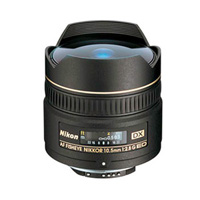
Naturally this lens is available only for Nikon, and for Fujifilm cameras that have the same mount. The focusing distance is remarkably short - 14 cm, but a little greater than on Sigma mentioned above. Like the Sigma 10 mm, it is supposed to be used with APS-C sensors. Unlike Canon's EF-S, Nikon's DX lenses can be used with full-frame cameras but will result in reduced frame. The image captured with this lens would look as if the focal length were about 15 mm in full-frame equivalent, i.e. the field of view would be narrower. Since I use Canon cameras, I can't tell anything concrete about this lens. To me it looks like Nikon's counterpart to Sigma 10 mm fisheye.
Sigma 15mm F2.8 EX DG Diagonal Fisheye
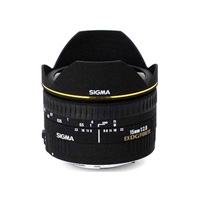
It focuses at 15 cm and is the lens of preference by many herp photographers. I own a copy of it, too, and have used it frequently. It is a great quality lens that provides excellent IQ and is a unique lens for full frame. As of time of writing, it was out of competition: There are no alternatives for Nikon/Fujifilm and Sony because their own fisheye lenses focus minimum at 20 cm. For Canon there is a fisheye zoom lens discussed below, but the Sigma 15 mm is more value for the money unless someone really needs a shorter focal length that the Canon zoom offers. For close-up wide-angle photography of reptiles and amphibians this is the best lens among fisheyes - both for APS and APS-C sensors. Therefore, I have to recommend it without too many reservations to everybody who is interested in herp photography. Personally, I don't like the bokeh of this one and actually of all Sigma lenses that I have seen so far. The other minor problem is that you have to set the exposure manually because cameras tend to overexpose when used with this lens.
EF 8-15mm 1:4 L Fisheye USM

The Canon EF 8-15mm 1:4, after it was released in 2011, was a unique lens among lenses SLR cameras because it was the first fisheye zoom ever made for APS sensor. (Note: The Tokina zoom lens that will be described below is supposed to be used with APS-C cameras.) For nature photography, it is usable only at the long end - 15mm. Then it is equal to the Sigma and has the same minimum focusing distance - 15 cm. Obviously, it is a Canon-only lens, unparalleled in other brands, but Sigma fisheye lenses for Canon are less expensive and provide similar or, as primes, even better image quality. Thus, only someone who strongly believes that Canon lenses are the best and for whom money isn't an issue would prefer this lens to Sigma 15mm f2.8 EX DG Diagonal Fisheye.
Tokina AT-X 107 DX AF 10-17mm f/3.5~4.5 Fisheye
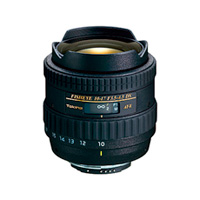
This is currently the only zoom fisheye lens optimized for APS-C sensors. Like Sigma 10 mm it focuses at 14 cm but can provide a narrower view field if set to greater focal length than 10 mm. Setting this lens to 17 mm significantly reduces the huge barrel distortion of a fisheye lens. Like Sigma fisheye lenses the Tokina AT-X 107 is a favourite lens of underwater photographers. For herp photography the greater focal length is more interesting because it helps to reduce the distortion with optics and not through cropping in software. Thus, if I had an APS-C camera and this lens I would use it at 17 mm all the time.
The images produced by this lens did not impress me when I saw them in reviews. My impression is that this lens is less sharp than the 10 mm and 15 mm primes made by Sigma. Reviewers also complain about chromatic aberrations that this lens is prune to. The images coming from my Sigma 15 mm are almost free of CA.
Carl Zeiss Distagon 2.8/25 T*
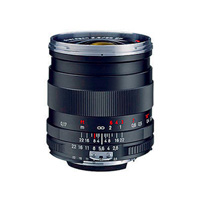
Zeiss Distagon focuses not so close as the fisheye lenses discussed above, but it appears to be a unique lens of its kind because it is a moderate wide-angle lens. Usually such lenses have a minimum focusing distance of 25 cm and more but this one can focus as close as 17 cm - only 2 cm farther than a fisheye lens. As for the time of writing, Carl Zeiss was producing the Distagon 2.8/25 T* only for Nikon, Pentax and M42 (screw) mount. However, any of these versions can be used on Canon with an adapter. The drawback is the need to set the aperture manually on the lens because even the best adapters do not transfer information from the camera. Therefore, I preferred the older version of Distagon 2.8/25 T* which has a separate aperture control ring.
The Distagon 2.8/25 T* has at least two advantages over the fisheye lenses: First, the extreme barrel distortion characteristic for fisheye lenses is absent in the images produced by it. Second, this lens is compatible with 58 mm filters, hence graduated and polarizing filters can be used with it. It is a very useful capability in herp photography because the upper 2/3 or 3/4 in an image that was captured with a fisheye lens are often overexposed when the exposure was measured on the subject - a frog or a lizard on the ground. A graduated ND filter may help to solve this problem.
As in all Zeiss lenses, the image quality that this lens delivers is superb. The images have typical for Zeiss lenses smooth bokeh, excellent contrast and natural-looking colours. In terms of imaging performance and build quality it is the best lens in the line-up of close focusing lenses presented here.
The 2 cm greater focusing distance of Distagon compared to Sigma fisheye lens may be of disadvantage when the photographed subject is very small. However, a greater focal length may compensate this. Like all Zeiss lenses, the Distagon 2.8/25 T* is a manual-focus-only lens. However, it is not an issue when this lens is used for herp photography because for a close-up wide-angle shot of a reptile or amphibian any lens usually has to be focused manually.
Sigma 24mm F1.8 EX DG ASP Macro
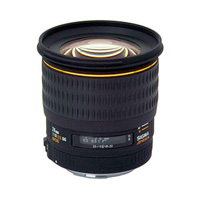
This is the second non-fisheye wide-angle lens that I am aware in the league of lenses with minimum focusing distance of less than 20 cm. Though it focuses at 18 cm, it is still close enough for most subjects in herp photography. As all Sigma lenses this lens is being produced for Canon, Nikon/Fujifilm, Sony, Sigma and Olympus. There appears to be a consensus among reviewers of Sigma 24mm F1.8 EX DG ASP Macro that it is inferior to the rest of lenses in this list both in image and in build quality. Probably the most interesting in this lens is its maximum aperture of f/1.8 that is certainly of advantage if this lens used for low-light - not in herp photography, however, where a greater depth of field is important.
I am mentioning the Sigma 24mm F1.8 EX DG ASP Macro here for completeness and not for recommendation as a herping lens. However, it is inexpensive and someone who already has this lens may try to use it for herp photography.
Carl Zeiss Distagon 2/24 T* ZA

This is a specific lens for Sony Alpha. With 19 cm, it has the biggest focusing distance among the lenses in this line-up, but still it is less than 20 cm. Therefore I mention it here for the sake of completeness. For herp photography with a Sony Alpha camera a Sigma 15mm f2.8 EX DG Diagonal Fisheye should be a more suitable and even less expensive alternative. For the time of writing, the only existing Sony fisheye lens - SAL-16F28 16mm f/2.8 - had the minimum focusing distance of 20 cm and wasn't an option at all. |
| sent on May 15, 2012 (15:17)
Interesting article, thanks for sharing! |
| sent on May 15, 2012 (15:42)
In case someone is wondering what these lenses are for, here a couple of examples of my photography with Sigma 15 mm:


Both images are non-cropped, made with a full-frame EOS 5D Mk II. The working distance was about 5 cm. |
| sent on May 16, 2012 (3:11)
For most cases, it makes the subject afraid or awkward (for human portrait), doesn't it.
Anyway, it is interesting share. Like it. 
Bravo!
www.budiharyantophoto.com |
| sent on May 16, 2012 (11:26)
Yes, Budi, you are right, cases when the amphibian or reptile in front of the lens is undisturbed are rare. I guess, in 90% of herp photos that people show the subject was somehow handled. We need this even if we use a macro lens. Even with a tele it is usually impossible not to scare them. Reptiles can see very far, and they notice a photographer very early. Often they escape before the human sees them. Some species live on difficult terrain - in dense grass, high in trees, under rocks... - and almost never appear in clean places that would be suitable for photography. The only way to photograph such species is to catch and to put an animal to a suitable place. Then it is often evident that the subject is scared, e.g. a snake and a lizard would show threatening behaviour, a tortoise would hide the legs and the head, some animals pretend to be dead, etc. With amphibians it is easier: Most of them look on photographs normal even if they were caught. They are also easier approachable, i.e. let you come much closer with the lens than reptiles before they get alert.
Hence, herp photography is often not shooting a "free and undisturbed" amphibian or reptile but achieving an image that looks so. Otherwise, people would never get tidy images of such subjects - i.e. with nice composition, lighting, clean background, etc.
However, sometimes we are lucky and the animal allows us to approach close enough. Better chances for this are with common and in some locations still abandon animals, such as common toads and sand lizards in some parts of Europe. After many hours of trials one can achieve such a result.
On one photo that I showed above the male toad is in the water and calling. He was busy and didn't pay attention to the lens and the camera that was just in front of him. So this photo shows absolutely natural behaviour of an undisturbed animal.
For the photo of female sand lizard I had to catch it and to put in front of the lens. I have a friend who is an expert for this family of lizards - Lacertidae. He believes that he can tell if such a lizard on a picture is afraid. I showed him some photos, and he wasn't always sure.
Personally I would recognise it not on posture and behaviour but on the surroundings. If the place is too clean, like in the above photo of common lizard, it is more likely that the animal was put on it by the photographer. But if there are hides in immediate proximity of the animal and it didn't escape there, it should have not been scared.
Here is another example: The lizard on the following photograph was absolutely undisturbed although I was photographing it with a 15 mm fisheye lens, i.e. from a very short distance.

BTW: All three photographs are full frames. |
What do you think about this topic?Do you want to tell your opinion? You can join the discussion by joining JuzaPhoto, it is easy and free!
There is more: by registering you can create your personal page, publish photos, receive comments and you can use all the features of JuzaPhoto. With more than 257000 members, there is space for everyone, from the beginner to the professional. |

Publish your advertisement on JuzaPhoto (info) |


 JuzaPhoto contains affiliate links from Amazon and Ebay and JuzaPhoto earn a commission in case of purchase through affiliate links.
JuzaPhoto contains affiliate links from Amazon and Ebay and JuzaPhoto earn a commission in case of purchase through affiliate links.